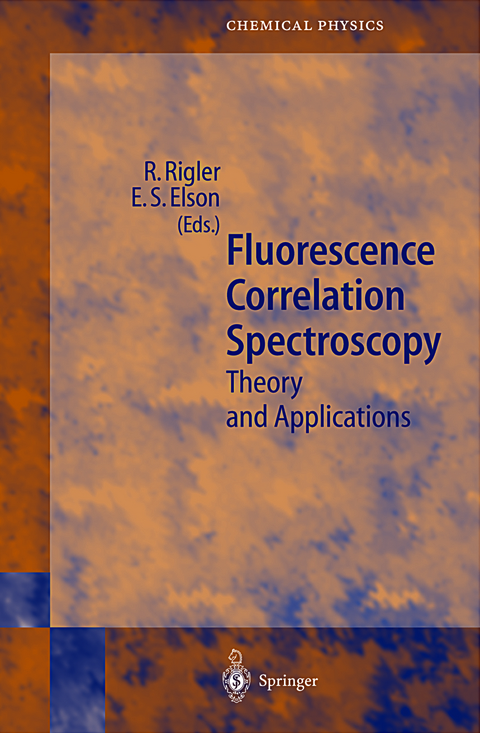
Fluorescence Correlation Spectroscopy
Springer Berlin (Verlag)
978-3-642-64018-6 (ISBN)
1. Introduction.- References.- I FCS in the Analysis of Molecular Interactions.- 2 Fluorescence Correlation Spectroscopy of Flavins and Flavoproteins.- 3 Fluorescence Correlation Spectroscopy in Nucleic Acid Analysis.- 4 Strain-Dependent Fluorescence Correlation Spectroscopy: Proposing a New Measurement for Conformational Fluctuations of Biological Macromolecules.- 5 Applications of FCS to Protein-Ligand Interactions: Comparison with Fluorescence Polarization.- II FCS at the Cellular Level.- 6 FCS-Analysis of Ligand-Receptor Interactions in Living Cells.- 7 Fluorescence Correlation Microscopy (FCM): Fluorescence Correlation Spectroscopy (FCS) in Cell Biology.- 8 FCS and Spatial Correlations on Biological Surfaces.- III Applications in Biotechnology, Drug Screening, and DiagnosticsPart 2 FCS at the Cellular Level.- 9 Dual-Color Confocal Fluorescence Spectroscopy and its Application in Biotechnology.- 10 Nanoparticle Immunoassays: A new Method for Use in Molecular Diagnostics and High Throughput Pharmaceutical Screening based on Fluorescence Correlation Spectroscopy.- 11 Protein Aggregation Associated with Alzheimer and Prion Diseases.- IV Environmental Analysis and Monitoring.- 12 Application of FCS to the Study of Environmental Systems.- 13 Photophysical Aspects of FCS Measurements.- V New Developments and Trends.- 14 Fluorescence Correlation Spectroscopy: Genesis, Evolution, Maturation and Prognosis.- 15 ConfoCor 2 The Second Generation of Fluorescence Correlation Microscopes.- 16 Antibunching and Rotational Diffusion in FCS.- 17 Cross-correlation analysis in FCS.- 18 Cross-correlated Flow Analysis in Microstructures.- 19 Introduction to the Theory of Fluorescence Intensity Distribution Analysis.- 20 Photon Counting Histogram Statistics.- 21 High Order Autocorrelationin Fluorescence Correlation Spectroscopy.- 22 FCS in Single Molecule Analysis.
| Erscheint lt. Verlag | 4.10.2011 |
|---|---|
| Reihe/Serie | Springer Series in Chemical Physics |
| Zusatzinfo | XX, 487 p. |
| Verlagsort | Berlin |
| Sprache | englisch |
| Maße | 155 x 235 mm |
| Gewicht | 767 g |
| Themenwelt | Naturwissenschaften ► Physik / Astronomie ► Atom- / Kern- / Molekularphysik |
| Schlagworte | diffraction • Fluorescence correlation microscopy • Microscopy • Molecule • Optics • polarization • Single molecule analysis • spectroscopy • stochastic phenomena and correlated motion • Thermodynamic fluctuations |
| ISBN-10 | 3-642-64018-4 / 3642640184 |
| ISBN-13 | 978-3-642-64018-6 / 9783642640186 |
| Zustand | Neuware |
| Haben Sie eine Frage zum Produkt? |
aus dem Bereich


